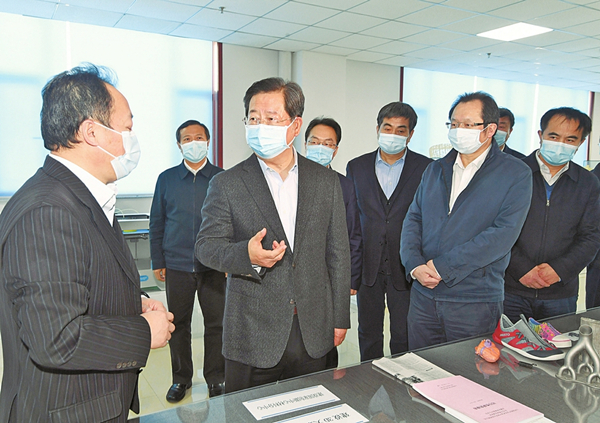Shanxi to develop new materials into pillar industry
Updated: 2020-04-23

Lou Yangsheng (second from left), Party chief of Shanxi province, visits the Shanxi Additive Manufacturing Research Institute in Taiyuan, capital of Shanxi province, on April 22. [Photo/Shanxi Daily]
A symposium and a government survey on the development of the new materials industry in North China's Shanxi was held in the province's capital of Taiyuan on April 22, according to local officials.
The government delegation -- led by Lou Yangsheng, Party chief of Shanxi province -- visited several new materials research institutions and companies in Taiyuan.
It learned about the innovation and research and development in new materials technologies and products. This included R&D and innovation in 3D printing, biodegradable materials, lithium batteries, carbon based high-end new materials, as well as the commercialization of new materials technologies.
Lou Yangsheng pointed out at the symposium that the new materials sector is a strategic and fundamental industry for economic growth in Shanxi -- as well as being a cornerstone for the equipment manufacturing sector and an important support for the core competitiveness of the province.
He emphasized that in order to build the new materials industry into a pillar industry driving the economic and industrial transformation and development of the province, efforts needed to be made in several areas.
First, Shanxi should accelerate scientific and technological breakthroughs, industrial upgrades, industry supply chain extensions and cluster developments in the sub-fields of new materials industry. These included special metal materials, carbon-based new materials, semiconductor materials and bio-based new materials.
Lou said that in the meantime the province should focus on making breakthroughs in key technologies, processing and equipment in the cutting-edge science and technology fields -- as well as incubate and develop leading companies in the related fields to form strong competitiveness.
In addition, it needed to introduce more new materials projects and reform and innovate in employment mechanisms, the development of related academic disciplines and recruitment drives -- as well as to improve talent and enhance training policies, to provide support for developing new materials industrial clusters.



